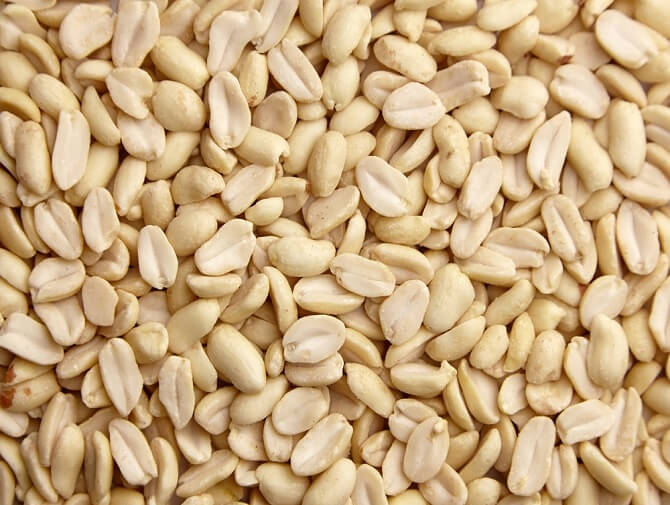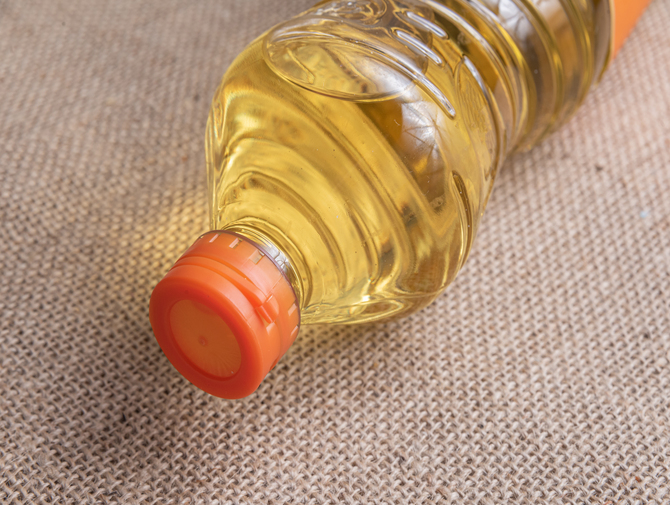

An ounce of information

Article by Pnut King
Published on 05/24/2023 in Peanut Science
A blanched peanut, also known as a skinless peanut, is simply one with the skin removed. When a peanut is harvested, its hard outer shell is kept intact, and under this shell, the nut is wrapped in a red skin layer. To remove this skin layer, skinless peanuts are passed onto a long dryer and roasting machine. Mild heat is then introduced, while the peanut travels on a metal mesh conveyor belt through a series of chambers which vary between hot and cold, in order to reduce temperature shock. Once the skinless peanuts are out of the roaster, either air pressure or rollers are used to apply friction and remove their skin.
Blanching peanuts involves removing their skins to create skinless peanuts. The process starts by harvesting peanuts with their hard shells intact. The nuts, wrapped in red skin, are conveyed through alternating hot and cold chambers on a mesh conveyor, reducing temperature shock. Subsequently, either air pressure or rollers gently eliminate the skin. This meticulous blanching method enhances the peanuts' flavor, making them ready for various culinary uses. This unique and expert technique ensures the production of high-quality skinless peanuts with optimal taste and texture.
Blanched peanuts, by their nature, don’t have shells, and typically acquire a slightly soft texture. They’re ideally suited for roasting, cooking or baking, and they make especially good peanut butter. Red-skinned peanuts, on the other hand, can be tricky to cook with. The skins often turn flaky when cooked and bits can easily crumble away, affecting the appearance of your dish. Smooth, clean, blanched peanuts make for a much easier experience.
Red-skinned, unblanched peanuts certainly have their benefits: They make for great peanut brittle, the skins add a subtle flavour, and they contain more hard-to-get nutrients than blanched peanuts. As a result, they’re great for snacking, thanks to their delicious nutty flavour when roasted, even without any sugar or candy coating.
Ultimately, the winner of blanched peanuts vs roasted peanuts comes down to personal preference – so we recommend giving both a try!
Technically, blanched peanuts are still considered raw. The blanching process is so quick that it doesn’t fully cook or boil the peanuts. To be safe, they should therefore be cooked prior to consumption, typically by roasting them. There’s little better than warm peanuts fresh from the oven.
Absolutely! Roasted blanched peanuts make a great snack, and can be easily added to pasta dishes or salads to add a tasty hit of protein.
Blanched peanuts are typically roasted at home laid out one layer deep in a shallow baking pan, and roast at 350°F/180°C for 15-20 minutes. They’ll tend to cook a little further as they cool, so it’s best to remove them from the oven just before they look completely roasted – usually as soon as they start to turn golden. Larger scale manufacturers use machines for their blanching and roasting. Several snack manufacturers roast their blanched peanuts just a few hours before producing the snack to retain the nuts’ fresh aroma and nutty flavour.
Whether you prefer blanched or unblanched peanuts for snacking and baking, both make for tasty and nutritious ingredients. Studies have even shown that eating a typical amount of peanuts each day may help to reduce the risk of heart disease.
It can offer a versatile culinary element in Indonesian cuisine. Widely used in dishes like "gado-gado," a flavorful peanut sauce, they add a unique texture and flavor. Furthermore, these blanched peanuts are key to preparing traditional sweets like "kacang telur" and "kacang mete," providing a delightful combination of crunchiness and taste. Incorporating these expert insights into Indonesian recipes can elevate your culinary creations, introducing a rare and authentic touch that showcases the richness of the country's gastronomy.
Blanched peanuts offer a unique texture and flavor due to their skinless nature, which distinguishes them from regular roasted peanuts. While both options have their merits, blanched peanuts tend to be preferred by those seeking a smoother and milder taste profile. The absence of the red skin layer also enhances their appearance, making them visually appealing. Ultimately, the choice between blanched and roasted peanuts comes down to personal preference, with blanched peanuts providing a distinctive option for those looking for something rare and expertly crafted.
Roasted peanuts offer a plethora of benefits. The roasting process enhances their flavor, rendering them crunchy and savory. This heat-induced transformation also boosts antioxidant levels, benefiting heart health. Roasting reduces moisture content, prolonging shelf life naturally. The Maillard reaction during roasting forms compounds potentially aiding digestion and nutrient absorption. However, moderation is key due to increased calorie count from roasting. Enjoy this rare synergy of taste and nutrition, but mindful consumption remains crucial for optimal health.
The raw peanuts vs roasted peanuts debate still rages today. So which is best? The truth is that it depends on taste, and what you’re going to be using the peanuts for. If you’re making snacks or confectionery, roasted blanched peanuts are often the favourite choice, but for cooking or baking, it makes more sense to use raw peanuts that can add even more to the flavour profile of your dish.
Wondering which peanut is better: raw or roasted? Both have unique advantages. Roasted peanuts boast enhanced flavor and crunchiness due to the Maillard reaction. They also offer increased antioxidant levels, supporting heart health. However, the roasting process slightly reduces nutrient content. Raw peanuts, on the other hand, maintain higher nutrient levels, including healthy fats and enzymes that might aid digestion. Ultimately, the choice depends on your preference. If you prioritize taste and texture, go for roasted. If you seek maximum nutrients, opt for raw.
Whichever you go for – raw or roasted, blanched or unblanched – peanuts will add nutrients, flavour, and texture to a wide range of dishes, snacks, and baked goods.
With over 17 years of experience in the peanut industry and numerous awards recognising his contributions, he founded Agrocrops in 2008, a leading global peanut company. His passion for peanuts drives his commitment to improving the industry for all stakeholders and promoting sustainability.

Published on 05/05/2025 in
.jpg)
Published on 02/05/2025 in

Published on 28/04/2025 in
.jpg)
Published on 14/04/2025 in
